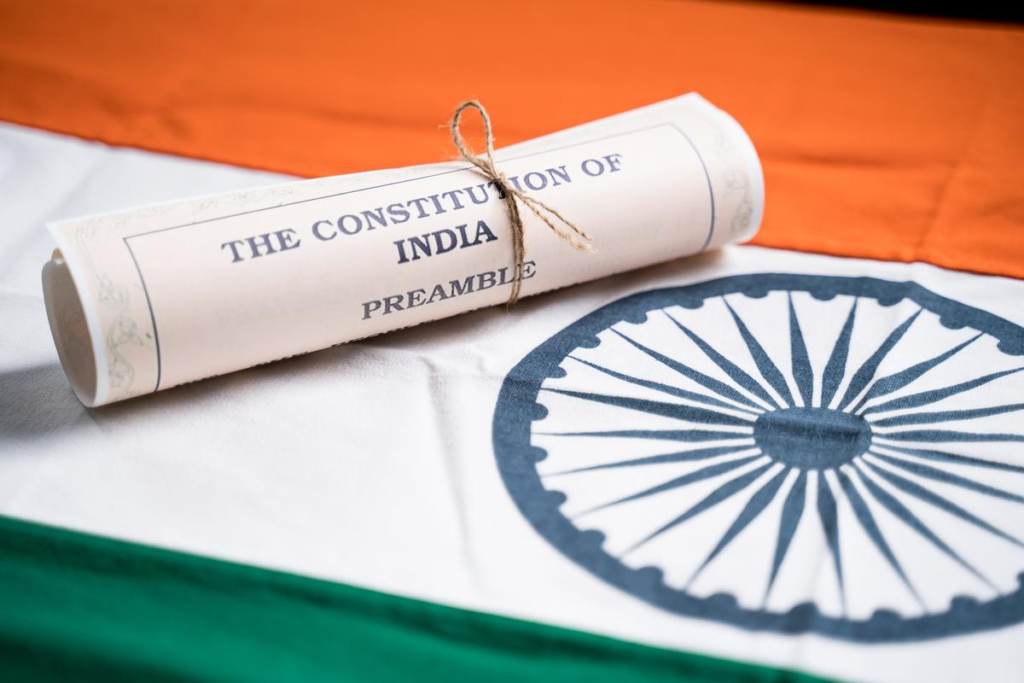| UPSC Relevance Mains: GS Paper II (Polity & Constitution): Examine diverse constitutional ideologies in India’s freedom struggle. Essay Paper: “India’s Constitutional Soul: A Reflection of Plural Ideals”. |
Why in News?
As India celebrates over seven decades of its democratic republic, there is growing academic interest in the pre-1950 constitutional imagination of India. Between 1895 and 1948, various constitutional drafts were proposed by nationalist thinkers — each representing unique ideological models of governance, sovereignty, and citizenship.

Background: Precursor Ideologies to the Indian Constitution
The Indian Constitution of 1950 was the product of intense deliberations within the Constituent Assembly. However, well before this, several leaders and political organisations had drafted their own versions of constitutions.
These early constitutional proposals reflected diverse political ideologies, including:
- Liberalism
- Radical Humanism
- Gandhian Decentralism
- Right-wing Nationalism
- Socialist Democracy
➡ ️ These ideological streams laid the foundation for the pluralistic and inclusive nature of the final Constitution adopted post-Independence.
Early Constitutional Liberalism: Constitution of India Bill, 1895
The Constitution of India Bill, 1895 was one of the first formal attempts by Indian leaders to envision self-governance under British rule. Drafted by early nationalists like Bal Gangadhar Tilak, it aimed to present a constitutional framework for India similar to that of the British system, though it sought dominion status (not complete independence).
Key Features:
- Contained 110 Articles – a detailed document for its time
- Inspired by British constitutionalism
- Strong emphasis on civil liberties, including:
- Freedom of speech
- Right to property
- Equality before the law
- Called for a representative form of government
- Proposed separation of powers between the legislature, executive, and judiciary
- Intended to achieve Dominion Status within the British Empire, not full sovereignty
Radical Humanism and Participatory Democracy: M.N. Roy’s 1944 Draft
In 1944, M.N. Roy, a revolutionary thinker and founder of the Radical Democratic Party, drafted a visionary constitutional proposal titled “Constitution of Free India: A Draft”. Rooted in Radical Humanism, Roy’s draft emphasized individual freedom, participatory democracy, and decentralised governance — a model that challenged both colonial rule and traditional parliamentary systems.
Distinct Features:
- Advocated popular sovereignty and linguistic federalism
- Proposed citizens’ committees at the grassroots level to ensure direct participation in governance
- Envisioned a justiciable Bill of Rights, covering not only civil-political rights but also economic and social rights
- Introduced a right to revolt — empowering citizens to oppose tyranny or authoritarianism
Key Insight:
M.N. Roy rejected parliamentary sovereignty, placing citizens at the center of power rather than elected representatives.
➡️ This concept of bottom-up democracy and people’s direct control over state institutions was remarkably ahead of its time and remains relevant in debates on democratic deepening today.
Right-Wing Nationalism: Hindusthan Free State Act, 1944
Drafted under the influence of the Hindu Mahasabha in 1944, the Hindusthan Free State Act outlined a vision of India as a culturally unified and unitary nation-state, titled the “Hindusthan Free State“. While rooted in right-wing nationalism, the document displayed a blend of majoritarian ideals with surprising secular guarantees.
Highlights:
- Advocated “One language, one law, one culture” to forge national unity
- Declared no official state religion and promised:
- Religious freedom
- Non-discrimination on religious grounds
- Proposed strong centralisation, but also included a clause allowing provincial secession under specific conditions
- Emphasised spiritual values, civic duties, and emergency powers for national protection
Key Insight:
Though often perceived as majoritarian or exclusivist, the draft surprisingly incorporated liberal-secular elements such as:
- Freedom of religion
- Legal equality
- Non-establishment of any religion by the State
This reveals the complexity within right-wing constitutional thought during India’s freedom movement.
Decentralised Village Republic: Gandhian Constitution, 1946
Drafted by Shriman Narayan Agarwal with a foreword by Mahatma Gandhi, the Gandhian Constitution of 1946 offered a radically different vision of India’s future — not as a centralised state but as a network of autonomous village republics (Gram Swaraj). Rooted in moral and ethical governance, it prioritised self-reliance, non-violence, and decentralisation over bureaucratic control.
Key Elements:
- Inspired by non-violence, trusteeship, and rural self-sufficiency
- Promoted Khadi, agriculture, and cottage industries as economic foundations
- Advocated minimal central governance – with village communities managing their own affairs
- Interestingly, included the right to bear arms for self-defence, reflecting Gandhi’s nuanced stance on non-violence
- Rejected a strong legal-bureaucratic state in favour of moral regulation and ethical leadership
Key Insight:
Gandhi’s constitutional vision was based more on ethical duty than legal enforcement, reflecting his belief that swaraj (self-rule) must begin from the individual and the village, not imposed top-down.
Socialist Vision: Socialist Party’s 1948 Draft Constitution
In 1948, the Socialist Party of India, led by Jayaprakash Narayan, presented a draft constitution reflecting a Marxist-socialist framework. It envisioned a radically transformed India built on economic equality, social justice, and class-based democratic representation — challenging both capitalist and colonial legacies.
Major Provisions:
- Called for nationalisation of all key sectors:
- Industries
- Banks
- Land and natural resources
- Abolished private ownership of means of production
- Proposed a class-based legislature:
- Representatives to be chosen from workers, peasants, and intellectuals
- Guaranteed:
- Gender equality
- Annihilation of caste
- Economic democracy through redistribution and social ownership
Key Insight:
Though ideologically robust, the draft lacked clarity in institutional mechanisms, administrative structures, and federal design — making it idealistic but structurally vague.
Comparative Analysis of Constitutional Drafts
| Dimension | 1895 Bill | M.N. Roy’s Draft | Hindusthan Act 1944 | Gandhian Draft 1946 | Socialist Draft 1948 |
| Governance Model | Liberal Legalism | Participatory Democracy | Centralised Nationalism | Village Autonomy (Swaraj) | Socialist Central Planning |
| Federal Structure | Implied Dominion | Linguistic Federalism | Unitary with secession | Confederal Village Units | Unclear (strong centre) |
| Civil Liberties | Strong Civil Rights | Civil + Socioeconomic | Secular but Nationalist | Moral Duties > Rights | Economic Rights Priority |
| Economic Vision | Minimal Intervention | Democratic Planning | Limited Economic Content | Agrarian & Non-Industrial | Full Nationalisation |
| Cultural Ideology | British Liberalism | Secular-Pluralistic | Homogenised Hindu Culture | Moral Unity & Tradition | Class Solidarity |
Legacy and Influence on the 1950 Constitution
While none of these drafts were adopted verbatim, their influence was undeniable:
- M.N. Roy’s emphasis on decentralisation and enforceable rights found echoes in Directive Principles and Panchayati Raj.
- Gandhian ideals shaped rural development policies and ethical governance.
- Socialist elements like land reforms, state planning, and economic equality entered Part IV of the Constitution.
- Liberal structures of the 1895 Bill influenced the fundamental rights and separation of powers framework.
These drafts highlight how India’s Constitution was not born in a vacuum, but emerged from rich ideological debates among early Indian thinkers and movements.
Conclusion: A Testament to Constitutional Pluralism
The multiple constitutional drafts between 1895 and 1948 reflected competing visions of India — liberal, socialist, Gandhian, and nationalist. These documents were not merely aspirational — they were blueprints of future possibilities, and they influenced the eventual framing of the 1950 Constitution in subtle but significant ways.
| Mains Practice Question Q. “Before the adoption of the 1950 Constitution, several constitutional drafts envisioned different models of Indian democracy. Discuss the ideological diversity of these drafts and their influence on the final Constitution.” (250 words) |
SOURCE- THE HINDU
Found this helpful?
Bookmark for revision, Practice the mains question, and
Share with fellow aspirants! THANK YOU
